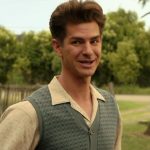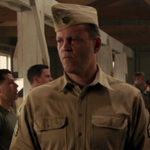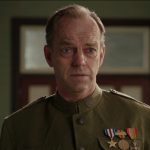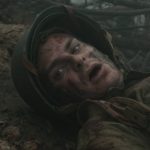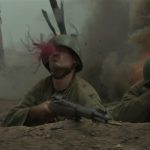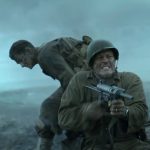Hacksaw Ridge – 2016
It is difficult to know where to start this review. This was a complex movie that was like a many-faceted gem. There were so many sides, and it looked good from every angle. It was a good movie that seemed to mark Mel Gibson’s return from the dark side. As you might remember, he was involved in a scandal in which he was recorded going on a racist tirade against his former lover. Since then, his career has been dead and he became a Hollywood pariah. But someone gave him another chance, and Hacksaw Ridge was good enough that it seemed to be something of a comeback for the ostracized celebrity.
The film was based on the true story of the first conscientious objector to be awarded the Medal of Honor for his military service in WWII. His name was Desmond Doss, played by Andrew Garfield. The movie starts out by giving us a little taste of the horrific battle scenes that are in store in the second half of the film, before taking us back sixteen years to Desmond’s childhood. We meet his parents, Tom and Bertha, played by Hugo Weaving and Rachel Griffiths. We see Desmond grow into a handsome young adult who is a picture of innocence. He sees and instantly falls in love with Dorothy, a nurse, played by Teresa Palmer.
His father is a WWI veteran who is upset when his sons join the military, wanting to spare them the horrors of war. One of the biggest themes in the film are the nature of religious faith and remaining true to your religious convictions. When Desmond goes to basic training, he excels in all its physical rigors, but due to his strong Seventh-day Adventist beliefs, refuses to touch any firearm or weapon. He refuses to kill. Even when faced with the scorn of his fellow soldiers and a court-martial, he refuses to quit the army or compromise his beliefs. As a result, he is allowed to train as a medic and go into battle without carrying a weapon.
Then the film shifts and we go into the mouth of hell with Desmond and his comrades. Sergeant Howell, played by Vince Vaughn, and Captain Glover, played by Sam Worthington, believe that Doss is a coward and don’t want him anywhere near them during battle. There are a number of other soldiers who share the same sentiment, like Smitty Ryker, played by Luke Bracey, and Luke Pelger as Hollywood, among others. Honestly, the film doesn’t give you time to get to know any of the rest of them, and most of them are either killed off or drastically wounded.
Much like the 1941 Best Picture nominated film, Sergeant York, with Gary Cooper, Private Doss relies on his faith to not only help him survive the battle, but to help him perform remarkable acts of courage and heroism. After several violent and bloody assaults on the battlefield, which is at the top of a 400 foot cliff, the American troops are forced to retreat down to the beach, leaving their wounded comrades to be finished off by the Japanese soldiers. But Doss remains alone and wanders through the carnage to find the survivors, while avoiding being detected by the enemy troops. He carries them back to the cliff and spends the whole night and the next morning lowering them down the cliff on a rope. He ends up saving seventy-five men before being forced to retreat down the cliff, himself.
The battle sequences were incredibly violent, graphic, and intense. There was so much going on, so many men running around and fighting, explosions, fire, dirt, blood, shouting, screaming, and dying that it was almost sensory overload. But of course, in film, it all has to be meticulously organized, story-boarded, and coordinated. To give proper credit, Mel Gibson did a fantastic job of directing the chaos, giving us the best depiction of a horrific WWII battle since 1998’s Saving Private Ryan or The Thin Red Line from the same year.
My favorite performances in Hacksaw Ridge came from the film’s lead, Andrew Garfield, Sam Worthington, and Hugo Weaving. Garfield somehow managed to maintain the innocence that the character required, all the way through to the end of the film. The script was obviously crafted with care, retaining the devoutly religious spirit of his character. Worthington played the hardened commanding officer, but I particularly liked him in the quiet scene after Doss’s night of heroism, in which he apologizes to the Private and asks for his forgiveness. And as for Weaving, well, he is a phenomenal actor. He is always good.
I did a little reading to confirm the film’s historical accuracy. There were a few little differences from reality like the fact that the battle on Hacksaw Ridge was not the first battle in which Doss had participated. Also, his heroic saving of those seventy-five lives took place over a period of three weeks, and not a day and a half. Timelines were condensed, people were combined into single characters, and a few events were made up to support motivations and intensify the drama. For example, the scene in which his father got drunk and threatened his mother with a gun never really happened. Maybe they could have left that one out. I know it was there to help explain why he refused to touch a gun, but I think his rock-solid faith in the fifth commandment, Thou Shalt Not Kill, should have been enough.
